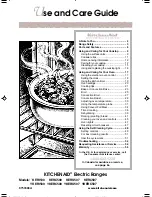
Sutron Corporation X-Link Operations & Maintenance Manual, Rev 1.63 5/24/2016 pg. 72
wanted to log both the minimum and the maximum, it would be sufficient to set
Details
to enabled.
7.1.2.
Logging Settings
7.1.2.1.
Logging Interval
Logging Interval
dictates how often to log sensor data.
Change the
Logging Interval
to measure sensors more frequently than to log
them. This is useful for alarm setups, in which you want to check the water level
once a minute in order to detect fast rising water, but one only wants to log the
water level data once an hour. For this scenario, the
Measurement Interval
would be one minute, and the
Logging Interval
would be one hour.
For alarm conditions, it is possible to set
Alarm Logging
to
Every Reading.
That
would result in the water level in the example above being logged once a minute
when the system was in alarm, and logging once only once an hour when not in
alarm.
If
Logging Interval
is set to zero, X-Link will log every measurement. It is the
same as having the
Logging Interval
equal to the
Measurement Interval.
LinkComm provides a
Log All
checkbox: when checked X-Link will measure and
log at the
Measurement Interval.
Having a
Logging Interval
that is shorter than the
Measurement Interval
is a bad
setup.
Only logged readings may be transmitted.
It is not possible to entirely disable logging of measurement results. However,
one can set the logging interval as slow as once a day.
7.1.2.2.
Log Error Value
When X-Link cannot get valid data from a sensor (more specifically, when a
sensor failure error occurs), X-Link will change the sensor reading to match the
user-set
Log Error Value,
which defaults to -99999. Such atypical numbers are
used to attract the user’s attention when viewing the log.
7.1.2.3.
Details
Details can be enabled or disabled. If they are disabled (which is the default), the
final result is the only data logged after a measurement completes. If Details are
enabled, several readings are logged along with the final result:
Minimum (the lowest sample collected)
















































